Interior designers say that these 5 features will transform your bathroom from everyday to elegant
Consider these elegant bathroom ideas, as told by luxury designers, to elevate your washroom into grandeur

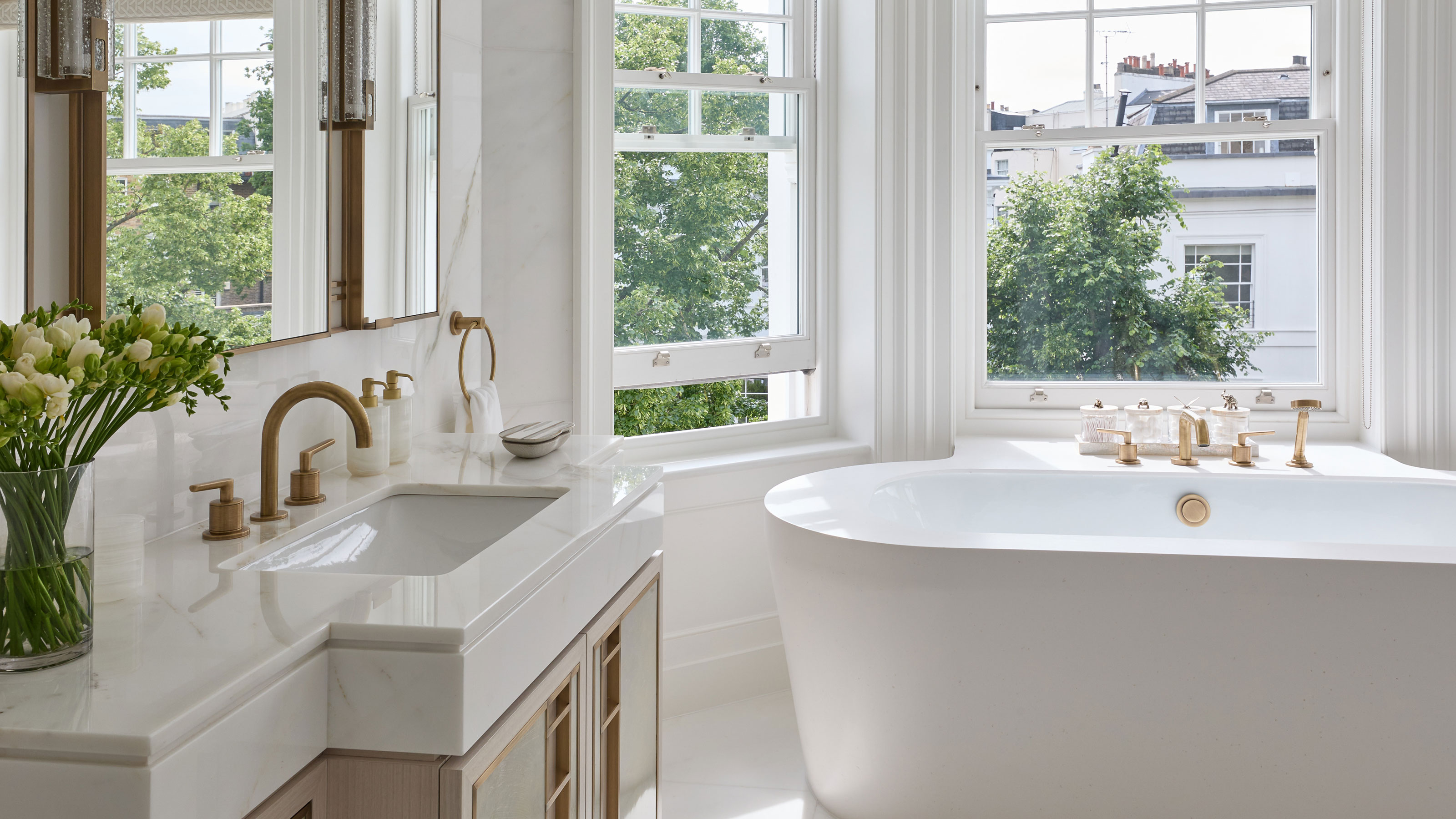
What do elegant bathroom ideas look like to you? Elegance, as a concept, is something that's hard to define in words, let alone in interior design schemes, but bathrooms often lend themselves to taking on an elegant quality.
Is it the culmination of luxurious materials? A thoughtfully designed layout? The right colors? Or is just a the slightest touch of grandeur that elevates bathroom ideas to the next level? Elegance is, after all, not the same as ostentation.
To try and pin down what elements come together to create a refined bathroom, we've talked to designers who have a magic touch for refined and sophisticated interiors. From luxurious paint colors to graceful tiles, here are the small touches they think can lend an air of elegance to your scheme.
Elegant bathroom ideas from top designers
'To design an elegant bathroom, keep in mind that wall cladding materials like tiles or marble with fewer horizontal cuts and grooves look better. Alternatively, smaller mosaic patterns can be used for sophistication,' says interior designer Kiran Gala, principal at Kiran Gala & Associates. 'Also, select neutral tones or reflective materials to create that chic space. Let as much light in as possible or use big mirrors to make it look spacious.'
1. Decorative lighting
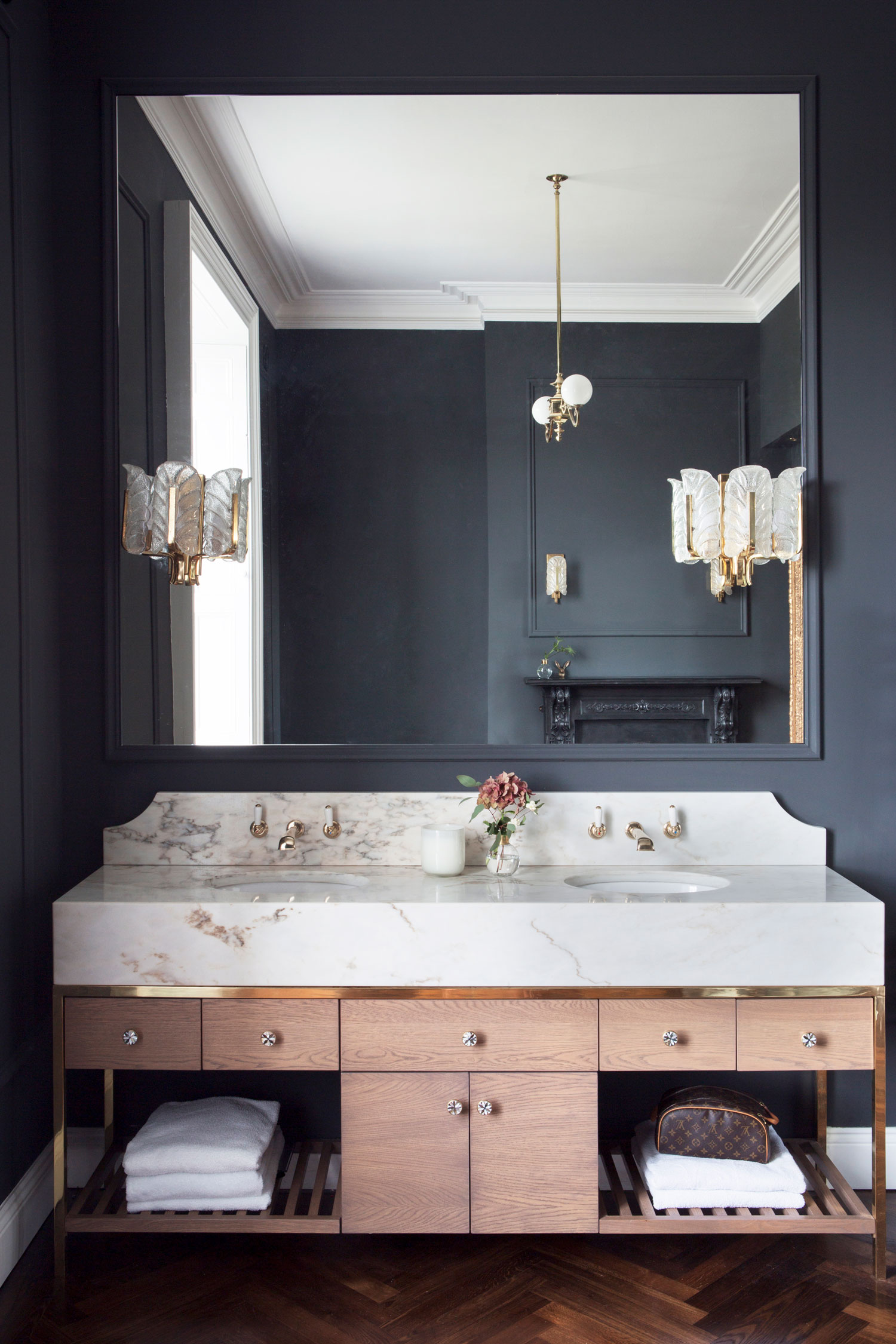
Bathroom lighting ideas tend to err on the side of utilitarianism, so choosing more expressive fixtures is a clear way to signal that your bathroom design is to be enjoyed for its aesthetics, not just as a workhorse space for the house. For an elegant bathroom, rich brass and deep bronzes are the order of the day.
'I love using pairs of decorative gold sconces on either side of a mirror,' says interior architect Cormac Lynch. 'I think these sorts of lights add character to any bathroom. And I love to pair them with little decorative additions, such as hand-painted metal shades, glass hurricane shades, or even patterned fabric shades.'
The same can be said for pendant lighting. For a more sophisticated touch, you can consider adding a chandelier if ceiling height allows, highlighting the grander proportions of the space.
The Livingetc newsletters are your inside source for what’s shaping interiors now - and what’s next. Discover trend forecasts, smart style ideas, and curated shopping inspiration that brings design to life. Subscribe today and stay ahead of the curve.
Elegant lighting can be used for ambient lighting, while more practical task lighting can be added discretely.
'In large scale high-end bathrooms, we generally a lot of indirect and hidden lighting,' says Matt Baran, principal designer at Baran Studio Architecture. 'LEDs built into mirrors for reflected light generally give the best rendering in a mirror, and avoid long shadows that are generally created by downlighting.'
2. Dark walls
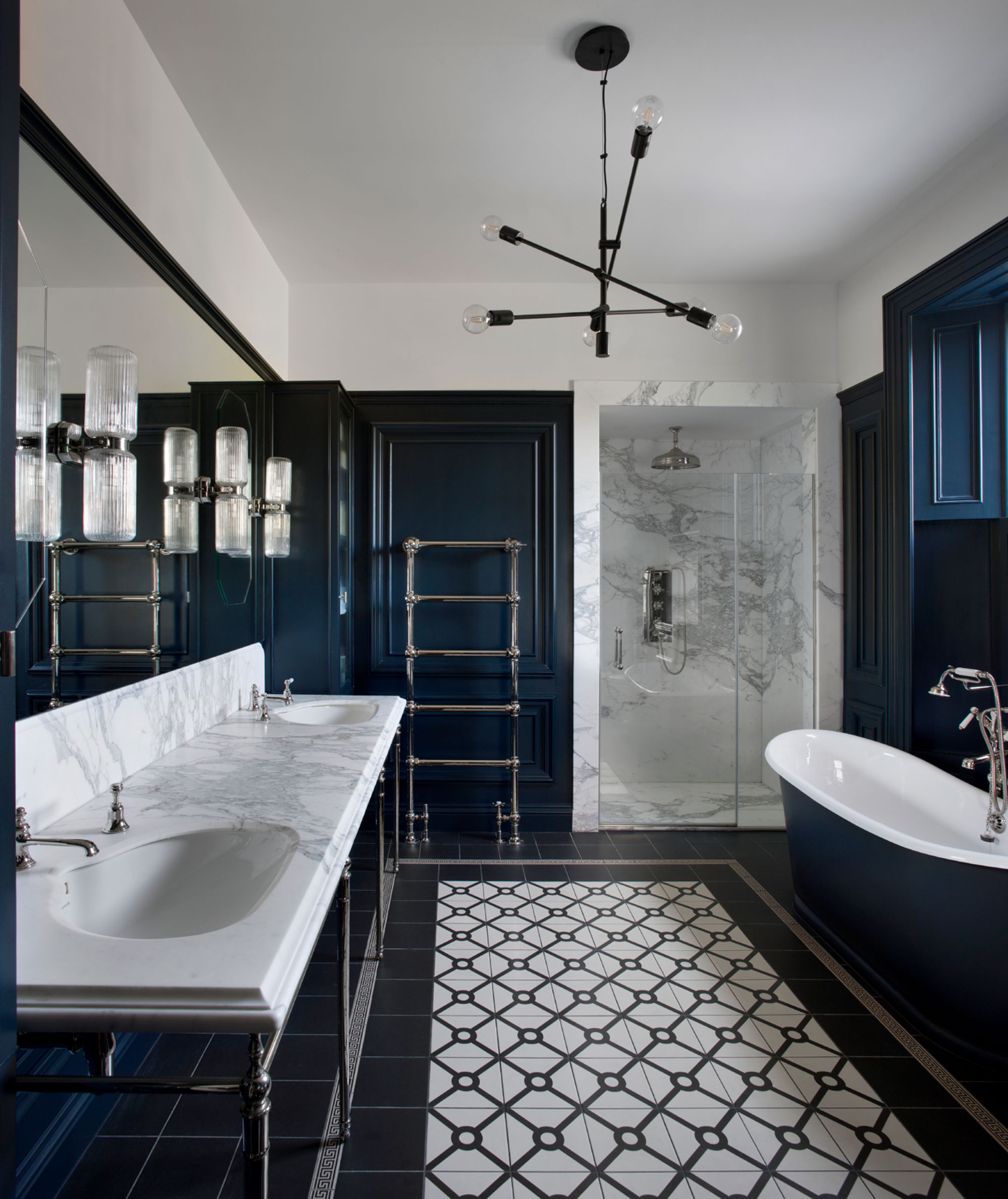
Deep, dark tones are inherently elegant; they not only create a moody interior but also give the space depth. To create a luxury bathroom that deserves a lot of attention, a luscious, dark color can work wonders.
Dark blue, grey or black can look particularly elegant applied to a classic style of paneling, as in this dark blue bathroom idea created by interior designers Kingston Lafferty. Here, classic fixtures from Drummonds lend authenticity to the grand style of the design, while a modern chandelier avoids the design becoming a pastiche of traditional style.
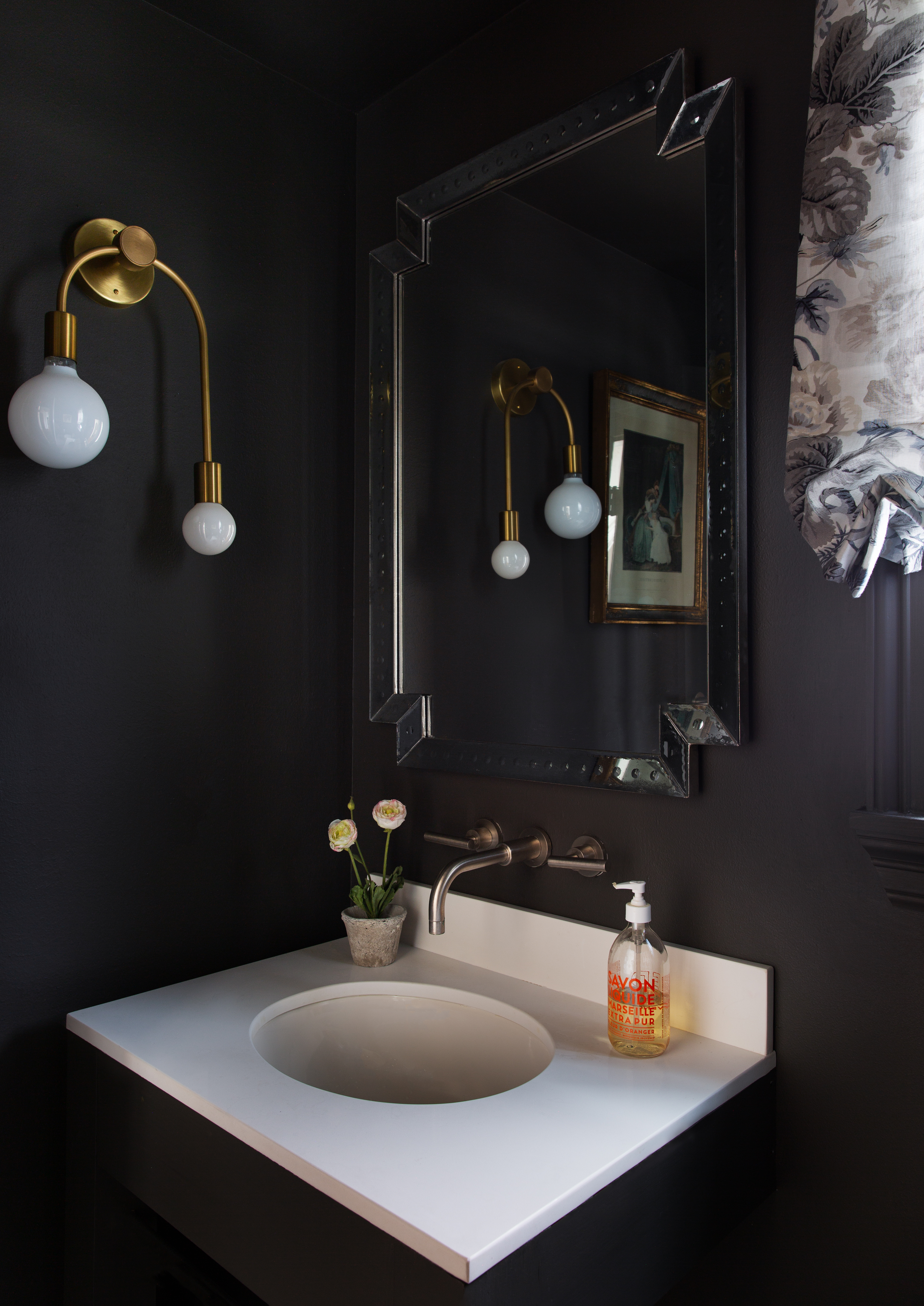
Dark colors can be used just as well to give small bathrooms a touch of elegance, as those with larger proportions, such as in this compact design by Mary Patton Design.
'Despite the minimalist accent details in this bathroom, we brought a moody black color like this one from Farrow & Ball to create a clean and crisp feel; it worked just as well as a white or neutral shade would,' says principal designer Mary Patton.
3. Detailed patterned tiles
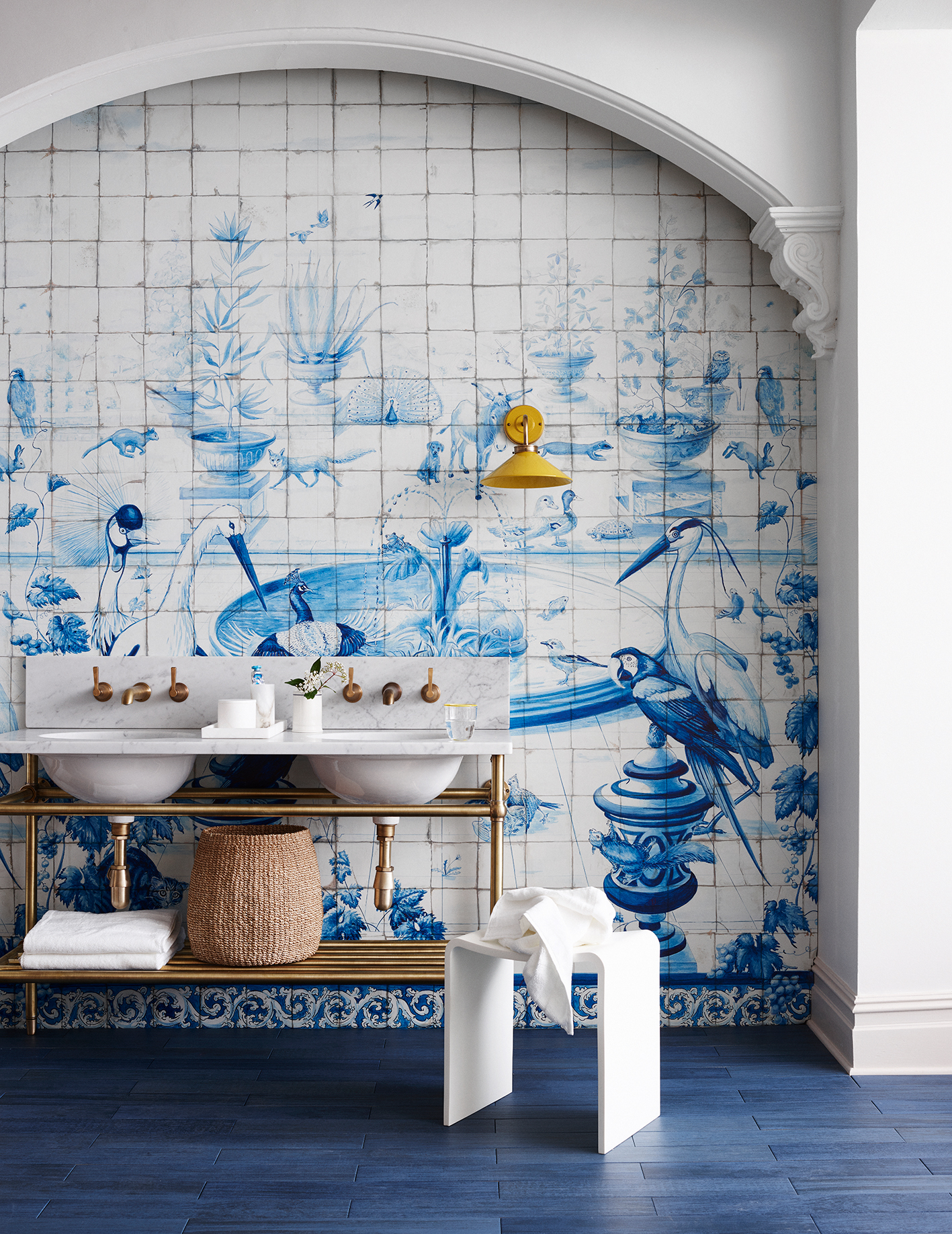
While there's been a trend for bold, graphic tiles in bathroom in recent years, intricately patterned bathroom tile ideas offer a classic quality that can look charming and refined. Use these tiny beauties to inject soft colors into your bathroom as well.
'Tiles are beautiful pieces of art on their own and have the power to utterly transform a room,' says Andrew Bendall of Craven Dunnill Jackfield. 'If you’re looking to experiment with bold colors and inspired layouts and patterns, the bathroom is the perfect space to make a distinctive design statement that is uniquely individual. Bringing texture up onto the walls through tiles adds tactility and allows light to beautifully reflect off the glazes, bringing vitality to a space.'
While patterned tiles are a good way to add beauty to the interior, you can also choose different types of tiles in complementary colors, and create a two-tone scheme. A narrow strip of tile on one wall can double as an accent element and provide a fascinating texture and color touch to your bathroom.
You can also tile around your built-in tub to make it the highlight feature of the room.
4. Terrazzo flooring
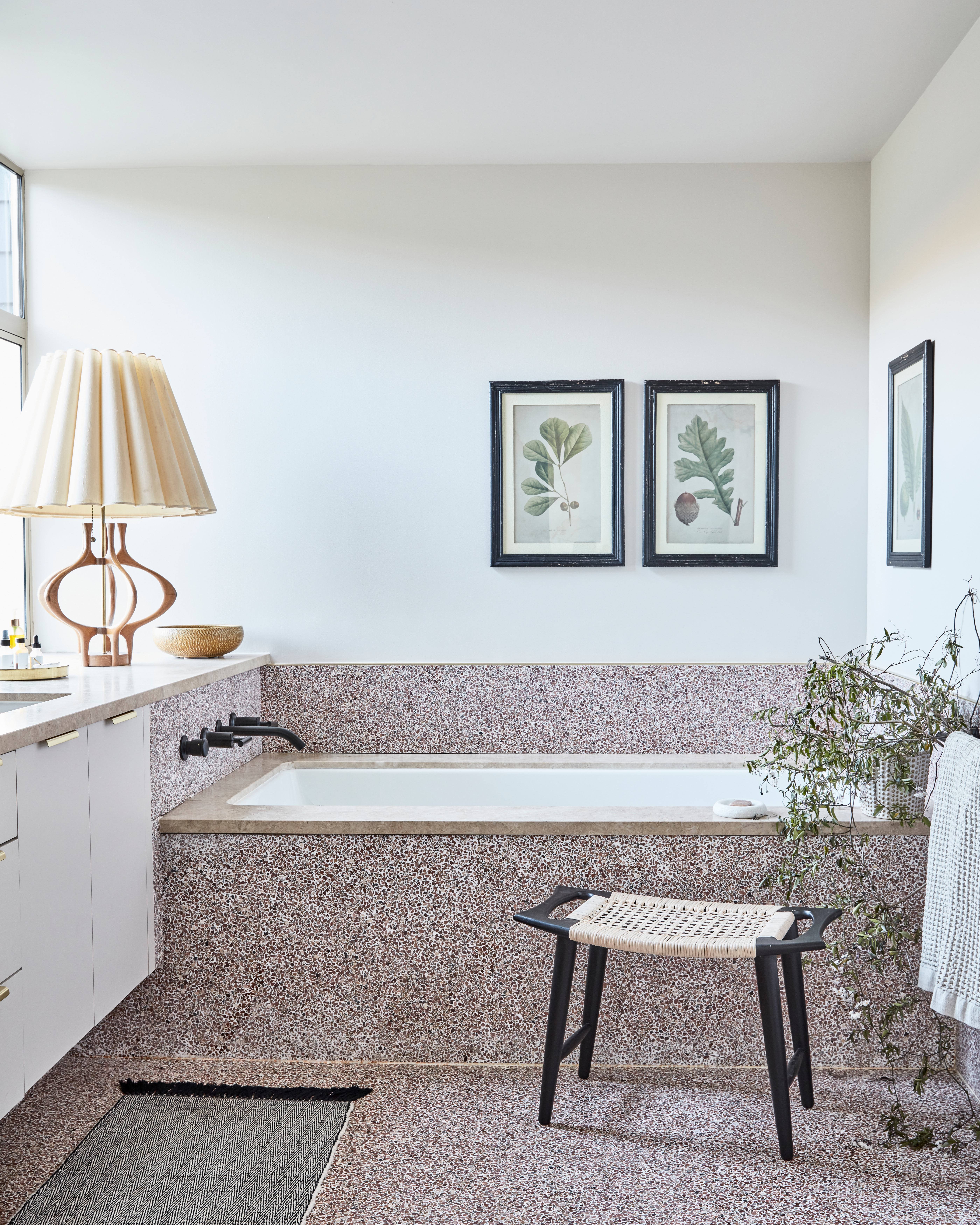
Terrazzo has had a revival in recent years in a more contemporary guise than before. However, traditional terrazzo still offers a sense of elegance.
'Terrazzo against the richness of oak cabinetry and furniture looks fabulous,' suggest Alice Arterberry and Barrett Cooke, principal designers at Arterberry Cooke.
The material first made an appearance in Venice in the 15th century, where workers mixed cement, stone, marble, and glass, to create terrazzo floors. Later in the 20th century, terrazzo became a material used on the flooring of industrial spaces and in office buildings. While it was always considered a simple, humble flooring material, it is now a design-forward look, and has found relevance in homes, used on walls, countertops, backsplashes, and more.
Though you're less likely to use a poured terrazzo floor these days, terrazzo remains a popular bathroom floor tile idea for an elegant look.
5. Veined marble
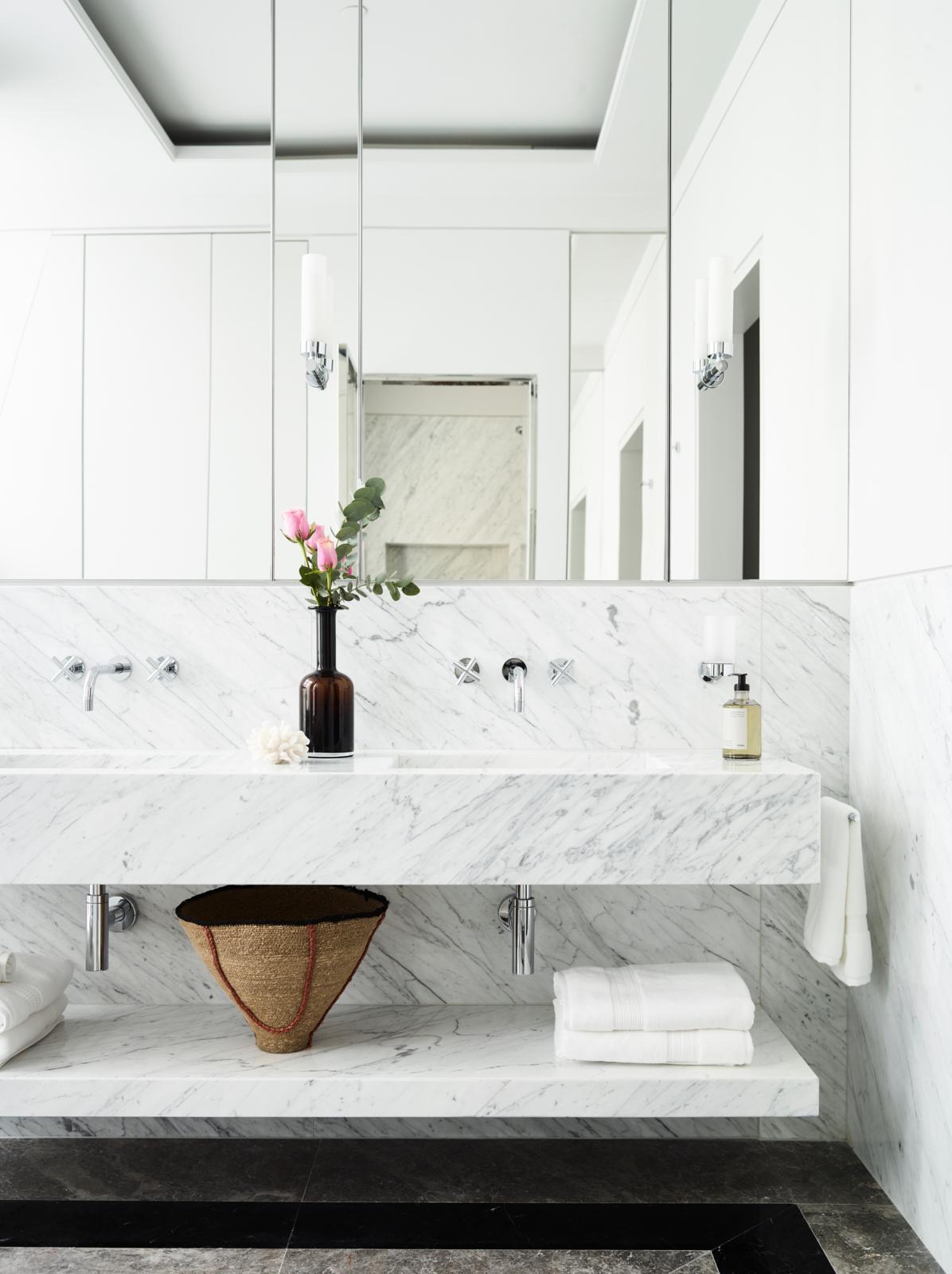
There's no denying the beauty of marble, but an extra wow comes into play when you choose a real stone with distinctive veining.
Marble is cool and restrained, but is versatile, too, thanks to the various tones it is available in. This makes it a wonderful option for bathroom sink ideas, which are the most used and one of the biggest elements that immediately attract eyeballs. By adding warm-toned metal taps in copper or antique gold, you can add a little glow to cool marble. Combined with wood, marble can seem warm and embracing.
For those with truly palatial pads, take full advantage of a long, two-basin marble vanity for that extra pizzazz.
'Floating Arabescato Corchia marble statement vanity, groove paneled walls, an antique mirror, a bespoke wall sconce, and a vintage gallery wall can create an elevated and timeless look in a powder bath,' says Trish Lynn, principal designer of Collette Interiors.
What elements make up a high-end bathroom?
When it comes to high-end interior design, whether it's the bathroom sinks, the flooring, fixtures, or lights, the prerequisite is always luxurious, rich materials. Because of their quality, marble, limestone, and travertine are popular choices in luxury bathrooms.
Cast-iron, copper or brass bathtubs, heated floors, cast stone sinks, automated steam showers, marble flooring, crystal chandeliers, body jets, and rainfall showerheads all contribute to an opulent space.
Other than these, accessories too make a difference in a bathroom. Premium-scented soaps, candles, essential oils, and other toiletries can elevate the environment.
Seating in the bathroom makes a big difference and reminds one of the beautiful resort properties. A cushy, upholstered bench, an ottoman, or an armchair can contribute to the element of luxury.

Aditi Sharma Maheshwari started her career at The Address (The Times of India), a tabloid on interiors and art. She wrote profiles of Indian artists, designers, and architects, and covered inspiring houses and commercial properties. After four years, she moved to ELLE DECOR as a senior features writer, where she contributed to the magazine and website, and also worked alongside the events team on India Design ID — the brand’s 10-day, annual design show. She wrote across topics: from designer interviews, and house tours, to new product launches, shopping pages, and reviews. After three years, she was hired as the senior editor at Houzz. The website content focused on practical advice on decorating the home and making design feel more approachable. She created fresh series on budget buys, design hacks, and DIYs, all backed with expert advice. Equipped with sizable knowledge of the industry and with a good network, she moved to Architectural Digest (Conde Nast) as the digital editor. The publication's focus was on high-end design, and her content highlighted A-listers, starchitects, and high-concept products, all customized for an audience that loves and invests in luxury. After a two-year stint, she moved to the UK and was hired at Livingetc as a design editor. She now freelances for a variety of interiors publications.